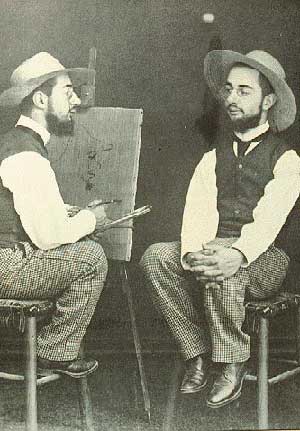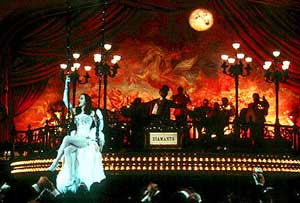Henri Toulouse-Lautrec is perhaps not a name that many people recognize today but the images that he created are familiar to every single one of us.
Toulouse-Lautrec came to embody everything that was so attractive and bohemian about the lifestyle in Montmartre in the late 19th century and he introduced the world to the Moulin Rouge. He lived a life that epitomized the age, that propelled him to fame and that proved to be his downfall.

The son of an eccentric aristocrat who had married his first cousin, Toulouse-Lautrec's life was far from normal from the moment of his birth in 1864. Due to the inbreeding in his family, Henri suffered from a rare genetic condition that prevented his bones from healing properly which proved fateful when at the ages of 12 and 14 years old he broke his left and right legs respectively. Both of his legs ceased to grow, although the rest of his body continued to develop normally.
At his full height, Toulouse-Lautrec was 4 and a half feet tall.
This tragic affliction turned out to be a blessing in disguise for Henri because it meant that he could not follow in his father's footsteps going riding and hunting - instead he turned to painting and sketching.
Having moved with his mother to Paris at the age of 8, during his teens Henri was drawn to the liberated, bohemian lifestyle of Montmartre. He started studying in a studio in the heart of unconventional Montmartre.
He surrendered fully to the temptations of the neighborhood, spending much of his time drinking, but constantly sketching, in the brothels and caberets. Much of the physical pleasures to be had in Montmartre were denied to Henri due to his abnormal physique so he sank deeper and deeper into the depths of alcohol abuse, replacing beer and wine with whisky and absinthe.
However it was during this time that he was at his most artistically brilliant, producing the iconic images of the Moulin Rouge that we are so familiar with today.
He created a series of posters for the Moulin Rouge both to immortalize his friends and advertise their venues. By 1901, Henri Toulouse-Lautrec's lifestyle caught up with him and he passed away at the age of 36.
His death was attributed to alcoholism and syphilis. His story embodies the infectious energy of the Montmartre which he so loved, yet which in the end proved too much.
Feathers, flying skirts and pheromones - in October 1889, Paris was buzzing with talk of the opening of a new cabaret.

Nicknamed le premier palais des femmes (the first palace of women), the Moulin Rouge promised to be the most seductive caberet show yet. It quickly gained a reputation as a place where the men of Paris could come and enjoy girls whose flexible dance moves were as loose as their morals.
Owned by Joseph Oller and Charles Zidler, the Moulin Rouge became synonymous with the new ideals of sexual liberation that were sweeping through Montmartre at the time.
Named "the Red Mill" in remembrance of the windmills that topped Montmartre at the beginning of the century, the caberet made stars out of the girls who danced there. Though the Can-Can had been danced in working-class ballrooms since the 1830's, it was the Moulin Rouge that cemented its popularity.
In particular, one woman: La Goulue.
Louise Weber started her life as a dancer at the age of 16, sneaking off to dance halls wearing expensive dresses borrowed from her mother's laundry.
A few years later she was making a name for herself dancing in small clubs all around Paris, captivating the male audiences by twirling her skirts to reveal a red heart embroidered on her panties. She earnt herself the nickname of La Goulue (the Glutton) because of her tendency to quickly down the punter's drinks as she danced past their table.
She was an immediate hit at the Moulin Rouge, bewitching crowds with her outrageous behavior and she was booked as a permanent headliner.
From then on La Goulue was the toast of Paris, the Queen of the Can-Can and the Moulin Rouge. She was the subject of some of Henri Toulous-Lautrec's most famous images.
In 1895 Louise decided to leave the Moulin Rouge and break out on her own, relying on her fame and the small fortune she had amassed. She embarked on a traveling show, but her fans didn't seem so enchanted outside of the seductive atmosphere of the Moulin Rouge.
The venture failed and in 1928, alcoholic and destitute, La Goulue returned to Montmartre to sell peanuts and cigarettes on a street corner.
The former Queen of Montmartre was unrecognizable as her former self and died in poverty and obscurity a year later.